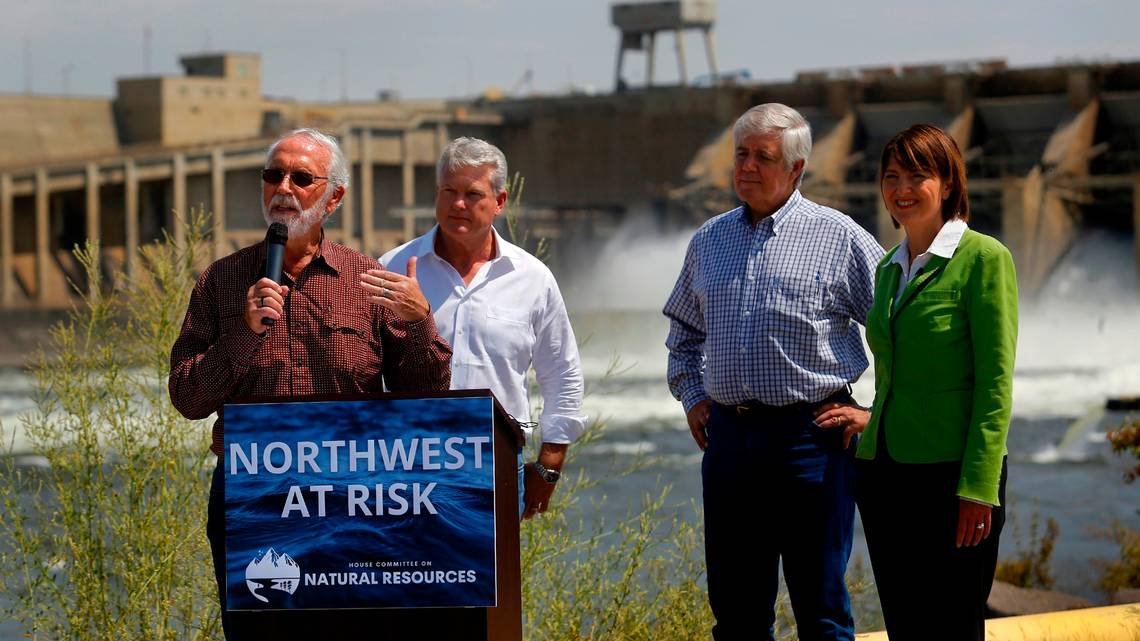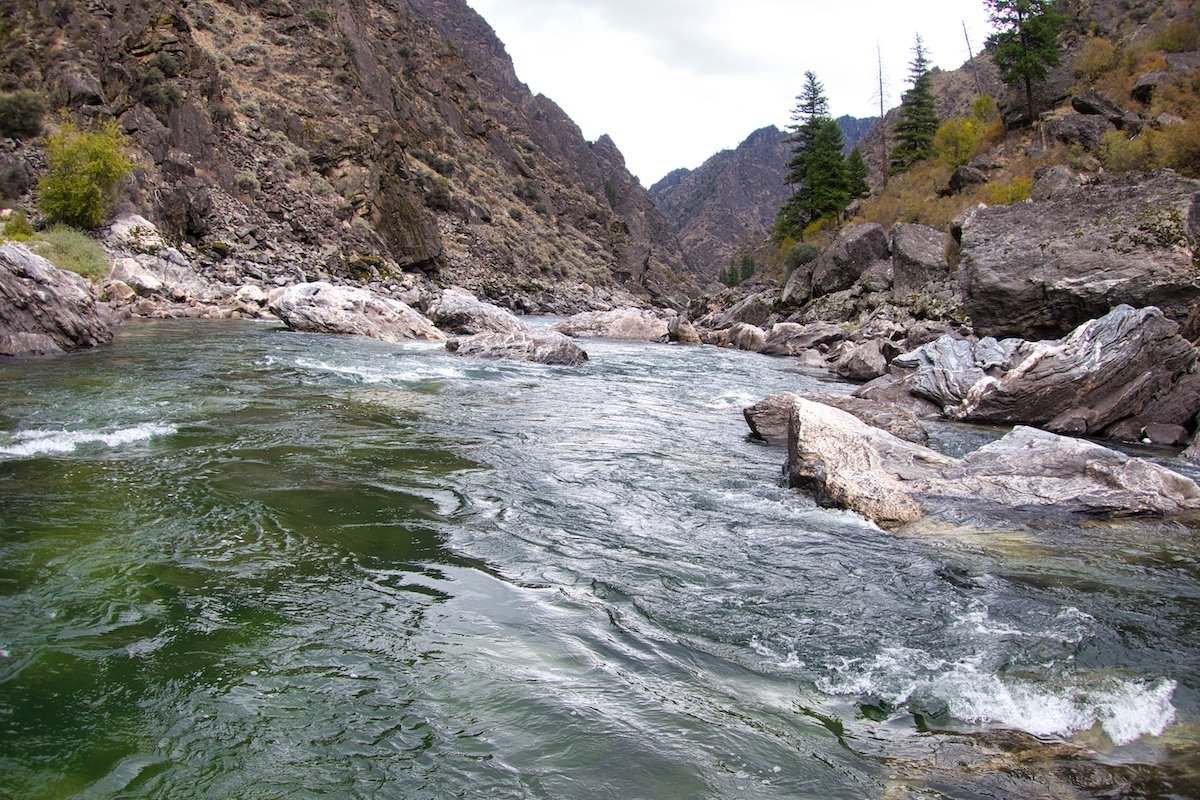Lin Laughy: Compelling facts on Snake River Dam Removal
Lin Laughy (pronounced law-hee) is a dear friend of mine who also happens to be a bold and stubborn activist, meticulous researcher, and eloquent yet concise writer.
He grew up along the Clearwater River in Idaho, and can remember vividly the free-flowing Snake River. I met Lin when he was organizing resistance to Exxon-Mobil’s plans to turn the Clearwater-Lochsa road (Highway 12) into an industrial corridor to haul mining and refinery equipment into Canada, back in 2010. Laughy led the charge against what was at the time, the largest corporation on the planet. We won that one.
Lin has since turned his attention to the scourge of the lower Snake River Dams. Here’s his latest take on the good reasons they should be reduced to rubble as soon as possible.
(Original Post) September 28, 2023
Threats and Uncertainties Regarding Future Barging of Grain on the Lower Snake River
Written by: Lin Laughy
Four dams on the lower Snake River (LSR) currently make possible freight transportation by barge. Almost all of this freight is downbound, and approximately 90% of total freight consists of wheat. The Snake River also provides a migration corridor for juvenile salmon and steelhead traveling from natal streams to the ocean, and for adult fish returning to their spawning grounds. Despite 25-plus years of effort and the expenditure of billions of dollars, several threatened and endangered Snake River fish species remain on a path to extinction. The vast majority of Pacific Northwest fish biologists, along with key governmental agencies, have stated that the recovery of these fish requires returning the LSR to a more natural flow by breaching the four lower Snake River dams.
Agriculture is an important part of the economy in eastern Washington and north central Idaho. Farmers who ship their crops by barge oppose any changes in the lower Snake River status quo. However, a growing number of realities threaten the continuation of barging on this inland waterway.
Litigation
A lawsuit challenging the Columbia River System Operations (CRSO), often referred to as the Bi-Op case, has been active for over twenty years, leading to several court decisions all supporting greater protections for threatened and endangered salmon and steelhead in the Columbia River Basin. In late August of 2023, both plaintiffs and defendants in this case secured a continued stay for another 60 days while mediation efforts continue to seek a possible out-of-court settlement. Federal Judge Michael Simon approved the stay. In an earlier finding, Judge Simon noted that “the CRSO federal action agencies have done their utmost to avoid considering …the reasonable alternative of breaching, bypassing, or removing one or more of the four Lower Snake River Dams.”
New litigation over lower Snake River water quality will likely be filed soon addressing water temperatures that are harmful, even lethal, to threatened and endangered Snake River salmon and steelhead. Reservoir absorption of the sun’s radiant heat makes meeting temperature pollution limits likely impossible without eliminating the reservoirs behind the dams.
A final comment about litigation: those who claim that breaching the lower Snake River dams would require the consent of the U.S. Congress may or may not be correct. However, to discover how much impact a court decision can have on Corps of Engineers-operated dams, see “Ruling Forces Corps to make Immediate changes to dams in Willamette Valley to save salmon.” https://www.statesmanjournal.com/story/news/2021/07/20/willamette-valley-dams-ruling-forces-corps-make-changes-salmon/8030512002/.
Native American Treaty Rights
Salmon are part of the cultural heritage of many people in the Pacific Northwest and are woven into Native Americans’ very existence as a people—their sustenance, economic wellbeing and spirituality. During the second half of the 19th century the U.S. government signed treaties with Pacific Northwest tribes guaranteeing the right “to fish, hunt and gather in their usual and accustomed places.” The U.S. Constitution declares treaties the law of the land.
On September 27, 2023 President Biden issued a memorandum that included this statement: “It is a priority of my Administration to honor Federal trust and treaty responsibilities to Tribal Nations — including to those Tribal Nations harmed by the construction and operation of Federal dams that are part of the Columbia River System…”
The Status of Snake River Threatened and Endangered Salmon and Steelhead
Snake River wild anadromous fish numbers remain far below what is needed for recovery to healthy fish numbers. For example, the recovery goal for wild spring/summer chinook salmon is 127,000. The estimated 2023 run stands at 10,714 fish, or about 8 percent of the recovery goal. Wild Snake River steelhead 2022/2023 totaled 19,138, with a recovery goal of 104,500. Sockeye salmon are on life support. With a recovery goal of 9,000 fish, the 2023 total is just 26 fish.
Southern Resident Killer Whales
In 2018 an orca mother called Tahlequah pushed and carried her dead calf for 17 days over 1,000 miles in the Salish Sea. Tahlequah’s story gained national and international headlines. Scientists have demonstrated that the Southern Resident Killer Whales are suffering from malnutrition. These whales are among the nine species the U.S. government (NOAA Fisheries) has identified as “most at risk of extinction in the near future” due principally to a lack of chinook salmon, the orca’s principal prey. A once major orca source of chinook salmon is the Snake River and its extensive tributaries. Orca scientists and much of the public—particularly residents of western Washington—actively support breaching the four lower Snake River dams.
Decline in Freight Volume on the Lower Snake River
In 1998, freight volume on the lower Snake peaked at 9.14 million tons. Average annual freight volume 2016-2022 was 2.47 million tons, a decline of more than 70%. The lower Snake River no longer transports paper, pulp, petroleum, lumber or, with rare exception, logs. With the 2016 loss of container-on-barge shipping on the lower Snake, pulse growers now ship their dried peas, lentils and garbanzo beans mostly by rail. The Inslee-Murray replacement report identified unit train loaders as a principal cause of the major slump in barging volume.
Related to the issue of LSR freight volume, on September 21, 2023, U. S. Senator Maria Cantwell announced the Washington State Department of Transportation would receive $72.8 million for upgrades to the Palouse River and Coulee City Railroad. This railroad is owned by Washington state and serves its Grain Train Program. The rail improvements will increase the speed at which trains can travel and also enable the use of larger rail cars with greater capacity. These improvements will lead to lower shipping costs by rail and draw more wheat off the river system.
Growing Taxpayer and Electricity Ratepayer Costs
In 1999, former Corps of Engineers freight transportation expert Dr. Edward Dickey wrote that the annual taxpayer subsidy for freight transportation on the lower Snake River was then $10M. Total freight barged that year was 9.14 million tons—a subsidy of $1.23 per ton. As noted above, the annual average freight volume 2016-2022 was 2.47 million tons. With today’s annual Corps of Engineers’ annual navigation costs at least $30M, the barging subsidy is now $12/ton, nearly 12 times greater than the 1999 subsidy. The taxpayer subsidy has now reached a conservatively estimated $40,000 per loaded barge.
The taxpayer subsidy does not include annual expenditures made by electricity rate-payers whose public utility districts purchase power from Bonneville Power Administration. BPA spends over 20% of its approximately $3 Billion annual budget on fish and wildlife mitigation, a claimed $700 million per year. Total ratepayer mitigation costs to date for fish and wildlife in the Columbia River basin exceed $17 billion.
Farmers who grow wheat within the Snake River corridor oppose breaching the four lower Snake River dams. Their cause is joined by fellow wheat farmers who fear a lack of competition could raise rail prices. Communities whose economic well-being depends on agriculture join in supporting the farmers’ position. However, for freight transportation to continue on the lower Snake, all or most of the following conditions must prevail:
Treaties between the United States and Pacific Northwest Native American tribes, protected by the U.S. Constitution, must be ignored.
Snake River spring/summer chinook salmon, fall chinook salmon, sockeye salmon and summer steelhead, all listed as threatened or endangered by the Endangered Species Act, must be allowed to follow their current path to extinction.
The requirements of the Clean Water Act must be ignored by the courts when considering the continued operation of the lower Snake River dams and their respective reservoirs.
The public, federal and state agencies, federal courts and Native American tribes must all ignore the extensive science that has determined the removal of the lower Snake River dams is a necessary requirement for the recovery of threatened and endangered Snake River salmon and steelhead.
Residents of western Washington, along with many citizens across the country, must abandon their passionate support of greatly endangered Southern Resident Killer Whales.
Climate change, with its known detrimental impacts to salmonids, especially those fish that must twice travel through an extensive series of dams and slack water reservoirs, must reverse course and the earth’s atmosphere begin to cool.
Now consider this: approximately 75% of the wheat that arrives at Oregon’s and Washington’s deep water ports for export arrives by rail— from eastern Washington, northern Idaho and as far away as Montana and North Dakota. Only 15% of this wheat travels on the lower Snake River. No valid argument explains why farmers who grow their wheat within the lower Snake River corridor should require a taxpayer subsidy of $12/ton.
The growing set of threats and uncertainties to continued barging on the lower Snake River urgently begs for a Plan B.
Support my mission to remove dams throughout the US by purchasing my latest book Cracked: The Future of Dams in a Hot Chaotic World, published by Patagonia Books.
Once a week I write about critical issues that affect salmon, steelhead, and free flowing rivers throughout the west. Get monthly updates straight to your inbox!

























Lin Laughy’s latest take on the good reasons the lower four Snake River Dams should be reduced to rubble as soon as possible.